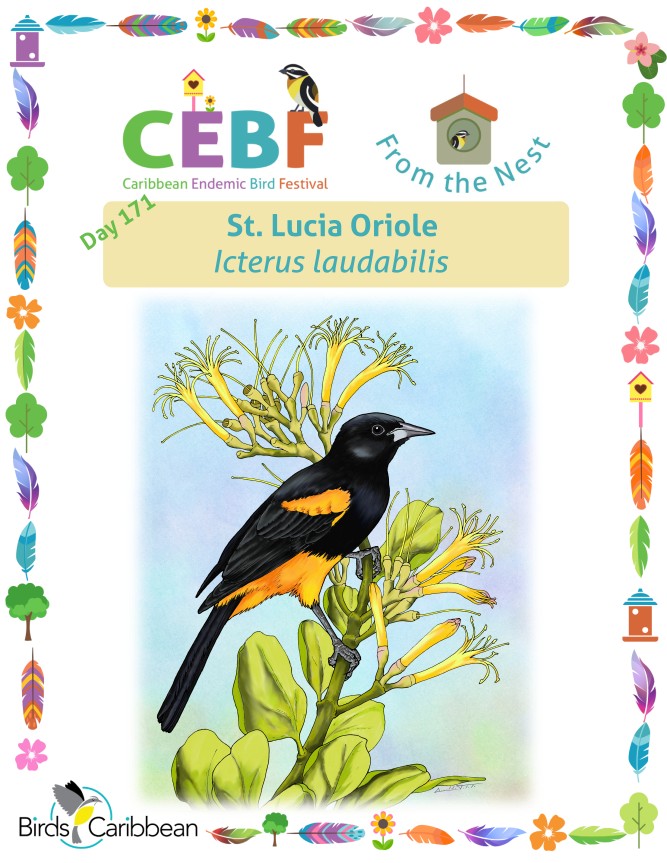Celebrate the Caribbean Endemic Bird Festival (CEBF) with us! Our theme in 2025 is “Shared Spaces: Creating Bird-friendly Cities and Communities”—highlighting the crucial role bird-friendly cities and communities can have in addressing the decline in bird populations caused by threats like habitat loss, predation, and climate change. Have fun learning about a new endemic bird every day. We have colouring pages, puzzles, activities, and more. Download for free and enjoy learning about and celebrating nature!
Endemic Bird of the Day: St. Lucia Oriole
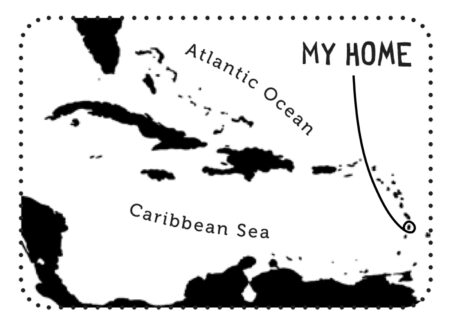 Locally known as Kawouge, the Saint Lucia Oriole is one of the island’s most striking endemic birds. The name Karwouge was likely derived from the French term “Carouge“, which is used as a name for New World blackbirds.
Locally known as Kawouge, the Saint Lucia Oriole is one of the island’s most striking endemic birds. The name Karwouge was likely derived from the French term “Carouge“, which is used as a name for New World blackbirds.
I remember seeing this oriole for the first time when I was about five years old, feeding on a ripe pawpaw near my family home. It was a sight to to behold! My grandmother told me its name: Kawouge. What she may not have known—and what I later discovered as an adult working with the Forestry Department—is that this bird lives only in Saint Lucia.
With bold shiny-black plumage and bright orange-yellow belly, shoulders, and rump, the male Saint Lucia Oriole is unmistakable. Females are similar but duller in color, and immatures sport a more muted yellow-green overall. The pointed dark bill, with a grayish-blue base, completes the bird’s distinctive look. There is simply no other bird like it on the island.
The Saint Lucia Oriole primarily inhabits rainforests, but can also be found in dry forests, coastal scrub, and even near towns—provided there are enough large trees. It has a varied diet, including insects, spiders, fruits, and nectar.
Breeding takes place from April to June. The female weaves a tidy hanging nest from grasses and plant fibers, often suspending it from large leaves such as banana, balizier, coconut, or palm. She lays up to three speckled eggs and incubates them herself. Like many songbirds, both parents work hard to feed and protect their young until they fledge.
Sadly, the Saint Lucia Oriole is under serious threat and is listed as Endangered by the IUCN. Several factors are suspected to contribute to its decline, though more research is needed. One major concern is brood parasitism by the Shiny Cowbird (Molothrus bonariensis), an invasive species that lays its eggs in other birds’ nests, tricking them into raising cowbird chicks. As cowbirds thrive in cleared, human-altered areas, their impact is expected to grow.
Another possible threat comes from the Bare-eyed Thrush (Turdus nudigenis), which may harass orioles, especially during nesting. There’s also concern that orioles living near banana plantations—where they often forage—may be exposed to pesticides through contaminated food or water. However, the actual effects of cowbirds, thrushes, or agrochemicals remain poorly understood due to a lack of detailed studies.
What is clear is that protecting forest habitats and maintaining healthy forest edges is essential. These buffer zones help limit contact between orioles and cowbirds by preserving ecological separation.
With continued habitat protection and research, there is hope that the Saint Lucia Oriole will remain a cherished part of the island’s unique natural heritage for generations to come. Learn more about this species, including its range, photos, and calls here. Great news! If you’re in the Caribbean, thanks to BirdsCaribbean, you have free access to Birds of the World and you can find out even more in the full species account of this bird!
Thanks to Arnaldo Toledo for the illustration and Adams Toussaint for the text!
Colour in the St. Lucia Oriole
Download our West Indies Endemic Bird colouring page. Use the photos below as your guide, or you can look up pictures of the bird online or in a bird field guide if you have one. Share your coloured-in page with us by posting it online and tagging us @BirdsCaribbean #CEBFfromthenest
Listen to the song of the St. Lucia Oriole
The song of the St. Lucia Oriole is a rapid jumble of whistles and squeaks
Puzzle of the Day
Click on the image below to do the puzzle. You can make the puzzle as easy or as hard as you like – for example, 6, 8, or 12 pieces for young children, all the way up to 1,024 pieces for those that are up for a challenge!
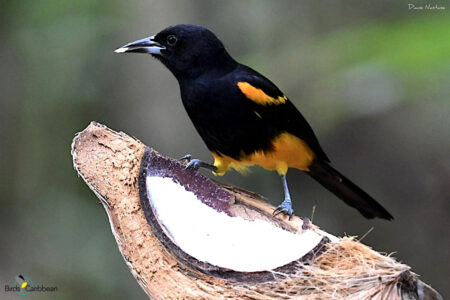
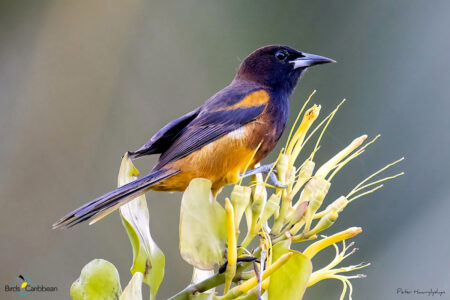
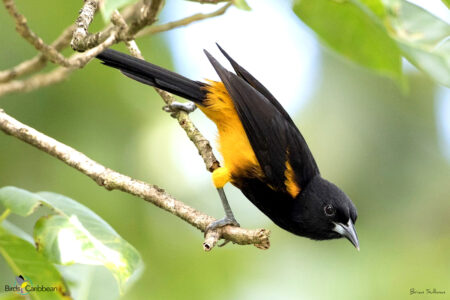
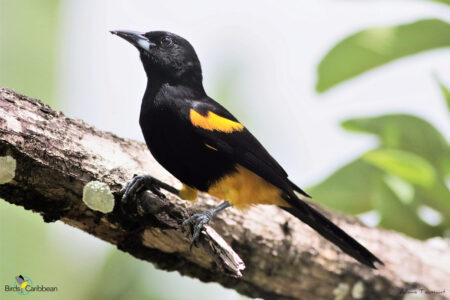
Activity of the Day
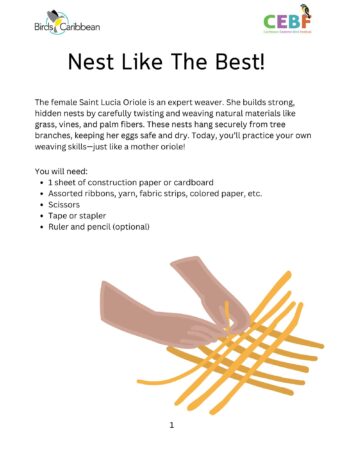 FOR KIDS :The female Saint Lucia Oriole is an expert weaver. She builds strong, hidden nests by carefully twisting and weaving natural materials like grass, vines, and palm fibers. These nests hang securely from tree branches, keeping her eggs safe and dry. Today, you’ll practice your own weaving skills—just like a mother oriole!
FOR KIDS :The female Saint Lucia Oriole is an expert weaver. She builds strong, hidden nests by carefully twisting and weaving natural materials like grass, vines, and palm fibers. These nests hang securely from tree branches, keeping her eggs safe and dry. Today, you’ll practice your own weaving skills—just like a mother oriole!
Nest Like The Best! And complete our St. Lucia Oriole weaving activity.
For this you will need:
- 1 sheet of construction paper or cardboard
- Assorted ribbons, yarn, fabric strips, colored paper, etc.
- Scissors
- Tape or stapler
- Ruler and pencil (optional)
FOR KIDS AND ADULTS : Enjoy this video of a St. Lucia Oriole in the wild!

